#Hardie Karges
Text
Samma Vaca: Right Speech on the Buddhist Middle Path
This is something so difficult for so many people that often no speech is better. Because Buddhism didn’t start the old ‘Silence is Golden’ saying, but it probably could have. Because it’s such a valuable tool in the workshop of life that its effect is invaluable. I think that it can easily be seen as the sonic equivalent of Emptiness for Buddhist purposes, that same shunyata Emptiness derived…
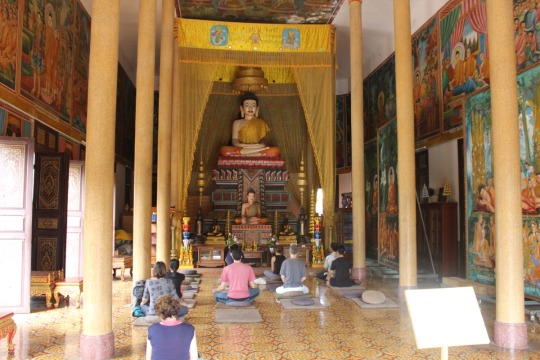
View On WordPress
#Buddhism#emptiness#Hardie Karges#language#Mark Epstein#meditation#Roman numerals#shunya#shunyata#zero
6 notes
·
View notes
Text
Of Mountains and Holes
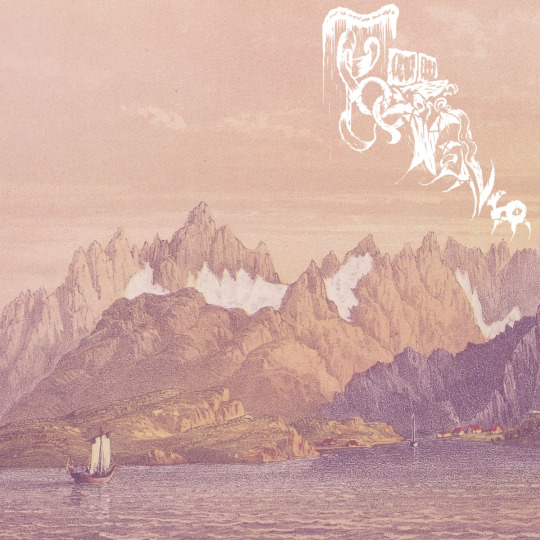
The Shire and Ten Alders, while providing similar cozy environments, are vastly different locations, most notably geographically. The residence of the Hobbits is sunken, filled with holes to stay safe and comfortable in. Ged, however, “...was born in a lonely village called Ten Alders, high on the mountain at the head of the Northward Vale” (Guin 2). While both areas are certainly designed with seclusion and protection in mind, both tackle that concept in opposite ways. The Shire is incredibly low to the earth, cutting out views of the outside world and giving a deep sense of security to the Hobbit residents, whether true or false. Ged’s home village instead provides the ability to have complete understanding of the world around them, heightening the sense of wariness of its inhabitants.
Something interesting to note about these two locations and the stories that occur around them is how an invasion is used to frame both the place and its characters. Given the forces involved, the locations do not necessarily provide protection though, as stated above, influence those within and how they tackle the oncoming threat. The stark difference in the attitude of the individuals who inhabit each location is also on full display. The Hobbits of the Shire, knowing they have very little chance against the invading ruffians, bow and cave immediately; meanwhile, the villagers who decide to remain in Ten Alders spend the entire night forging equipment to take with them to the bitter end, showing their hardiness and unity. Most importantly, both invasions are used to frame their leads in nearly opposite ways, with Sharkey’s gang showing how far the Hobbits had grown and assisting with the closing of the narrative. The Kargs, on the other hand, demonstrate how much potential and power Ged could eventually reach for, opening the story to a vast sea of possibilities.
2 notes
·
View notes
Text
Army Thoughts 4 – Boromites
I’ll be honest, it’s the Boromites that got me into this game, pictures of the lavamites, and especially the lavamite brood mother captured my imagination, and I loved the idea of putting them down on the table! Unfortunately for them, I also loved the Ghar, and as the Brood Mother hadn’t been released at the time… I went with them. I’ll definitely be onto the Boromites when they are released in plastic.
It’s time for another Army Roundup, where I go through every unit available to a faction and discuss its strengths and weaknesses. I keep the chat fairly low level, in the hopes that new players can gain an understanding of the factions and what they’re about before committing their hard earned cash.

The Boromites are a group of mining clans, technically human, but bio engineered to deal with high temperatures and pressures, making them very hardy and durable. They make a great contrast to the sleek “high tech” feel the Concord have, or the alien aesthetic of the Isorians. The Boromites are hard workers, and everything about them screams “function before form”, many of their weapons are repurposed mining tools.
Playstyle
The Boromites lack the adaptive weapons of the Ghar or the Concord, instead focusing more on the melee aspect of the game. Many are armed with really heavy duty melee weapons like tractor mauls or lectro lashes. They also bring a few cool looking animals with them into battle, from the lavamites which are deadly in melee, to the brood mother, an absolutely massive hulking rock covered monster, armed to the teeth with more guns than anything else in the game. The boromites are a tough nut to crack, their rock encrusted skin stopping bullets as effectively as armour.
In general the Boromites trade reaction speed and agility for higher melee strength and command stats on their grunts that even Karg can’t even beat. What you get is an army that just won’t quit.
Unit Breakdown
The bulk of a Boromite army is made up of workers, who have laid down their mining tools to fight for the good of the guild. They don’t rely on a lot of fancy high tech equipment, instead their re-purposed mining equipment definitely has a “used aesthetic” feel to it.
As with the C3, I’ll cover Drone attachments, X launcher ammo in another post, and characters at the bottom. Though the Borer Drone is unique to the Boromites (and amazing)
Tactical:
There are 6 options available for the Boromites

Gang Fighter Squad
At just under 100 points for 5, they’re pretty your basic fighters, all armed with mag guns, which whilst not as great as the plasma carbines, can still make a large dent in the enemy. You can add up to 3 extra men and give them all plasma grenades for somewhere around 150 points, at which stage you have an elite force that can’t be ignored… In melee there won’t be much left standing when they’re done. The leader can be equipped with either a tractor maul or a lectro lash for a one man army. Their command stat is the highest in the game, to the point they could have 4 or 5 pins and still be relied upon to make those checks when required.

Work Gang
The other basic unit, around the same cost as the gang fighters for the same number of men, the work gangs have a little more flexibility in how you equip them. They can bring mass compactors, which whilst shorter range than the mag guns, are devastating at close range, or Heavy tractor mauls, which trade long range firepower for pulping an opponent in melee with 2 attacks with respectable SV each. For a small price you can give them implosion grenades, for even more close range oomph, or vorpal charges... which are basically one shot missiles that force whatever they hit to fail a RES check and if they don’t hit they become a wild card and a liability, but most of all they’re fun. On top of this they are the have access to the borer drone!
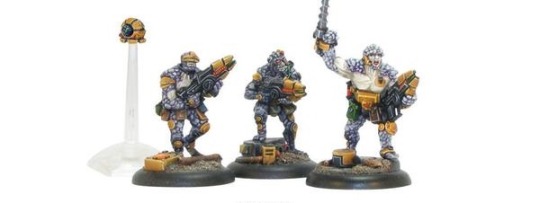
Overseer Squad
Your basic command squad, who costs as much for 3 men as the basic squads do for 5. This is because of the usual command and follow rules he brings! You can use him to start mass assaults with several units at once, and use his superior command stat to keep them in the fight longer. Interestingly, they’re one of the only units that can take a spotter drone, making them useful for granting LoS to larger weapon teams. By giving the leader a tractor maul or a lectro lash, like all Boromites, they’re pretty decent in melee too.

Rock Father
When I see this unit, all I can think is “tank”. 50% more expensive than the basic work or fighter gangs, he comes with two extra troops and 2 shield drones, and then he can take 2 more on top. The Shield drones let him block hits, meaning it can take quite a lot of shots to take him out. He comes with a tractor maul or lectro lash as is standard for top tier Boromites, but can also be given a plasma carbine, letting him contribute to the ranged fight too. A full squad of 5, with 4 shield drones sets you back around 250 points, but you simply won’t get him off an objective for a few turns. And then on top of all of this, he brings the command and follow rules to the table! Simply amazing. Personally I think it looks a little goofy, but you can’t argue with stats!
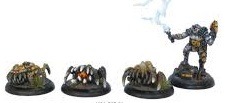
Boromite Lavamites
A very interesting unit, unlike anything I’ve covered before in these posts. They are a fully dedicated melee unit at an incredibly cheap cost. The handler is essential, as without him the boromites will quickly dissolve into chaos given their low command stat. The standard unit comes in a pack of 3, with a handler, but you can take 2 more, then add on a number of hatchling swarms on top. The lavamites themselves are tough to kill, harder to kill than even Boromites are, hatchlings slightly less so, but still pretty damned durable. With their acid sprays and several attacks each in melee, they are not something the enemy can ignore. Upgrading to rockbroods is a steal, rapid sprint means they can usually reach an unwary enemy at the end of turn 1, or near the start of turn 2. Because charges don’t have to be linear, the extra distance gives you plenty of wiggle room for blocking LoS on the turn before too! Though remember that a squad always moves at the speed of its slowest member... So give the leader a suspensor platform! As an extra bonus each lavamite comes with an additional attack, with a higher SV too! Nasty. 2 squads of these can give you some really great threat ranges your opponent can’t ignore.
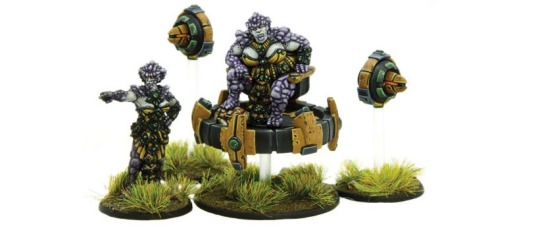
Boromite Matriarch
Your other choice for a command unit, the matriarch is comparable to the NuHu C3 and Isorians have access to, namely being a pair of models supported by a lot of drones. She can take up to 4 weapon drones, which are armed with plasma carbines, giving her respectable firepower along with 2 spotter drones and 2 shield drones. The only warning here is that she pretty much will have to take all the hits herself (though the guildless also has leader!), as drones typically cannot be allocated to. The 2 shield drones can help, but as with most cases, they only go so far and are better saved for the big, nasty shots.
All those drones start pushing the cost right up. Her suspensor platform pushes her up to scary speeds with a sprint... But given the unit has to move at the slowest member’s speed (the guildless) there’s not much that can be done. Bringing all her drones ups her cost from roughly 140 points to 200. Remember you can’t take the rock father and the matriarch in the same list.
Support
The Boromites have 4 support choices
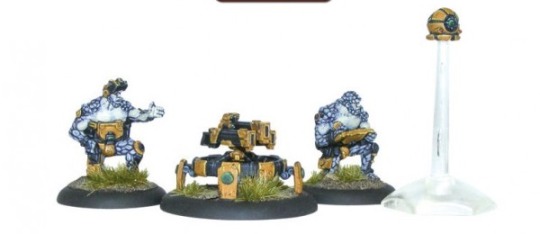
Boromite Support Team
Really cheap, at around 40 points to start with, they come armed with either an X launcher or a mag light. Given their position as a back line support unit its unsurprising that they lack some of the armour of other Boromite squads, though you can give them armour if you wish. They can also take a mag cannon or the devastating frag borer. I’ve split each potential configuration out:
X Launcher: The basic weapon great for digging units out of cover, and the fact it’s basically a mortar means LoS isn’t too much of an issue, especially with spotter drones around. You can take a variety of ammo types, which can convert this to a support piece, or even reliable suppression of hard to kill enemy squads.
Mag Light: The other basic load out, this relatively long range piece is just a nice way of throwing out some decent shots for taking down moderately armoured foes. It’s RF 3, so for bargain basement prices you get 3 shots.
Mag Cannon: The Mag light’s big brother, this costs a little more that trades rapid fire for incredible armour piercing shots. This is the perfect gun for taking out vehicles or heavy drones.
Frag Borer: This will double the cost of the team, in return you get this beast of a weapon. Every time this gun hits, the SV goes up, making it ideal for taking out heavily armoured opposition.
Boromite Specialist Support Team
The big brother of the support team, is 50% more expensive at base price, in return for letting them bring plasma weapons, which are slightly better than their mag equivalents.
Plasma light Support: Pretty much exactly the same as the Mag Light, except with a higher SV. Worth the extra points cost? Possibly, it lets you pin some of the heavier vehicles at least.
Plasma Cannon: For a few points more you can bring this, the next stage up from the Mag Cannon, it has a higher SV, but swaps “Massive Damage” which makes the Mag Cannon great vs larger targets for plasma fade?
Boromite Rock Rider Overseer Squad
The Boromite Cavalry! Three mounted on heavily armoured beasts called Locomites. They come armed with plasma carbines as standard, but that’s not the reason you bring them… The reason for that is the melee potential. They cost quite a lot for 3 troops, and if you give them lectro lances (and why wouldn’t you) you’re looking at a 150 point investment. But their rapid sprint rule, and the fact their mounts also get a melee attack means that these can get up the field fast, and destroy all but the most heavily armoured models with ease. You’re required to take the overseer squad before you can take more than 1 of the standard Rock Riders, though they come with the usual command and follow rules to help support your army, but given how fast they are, it might not see much use.
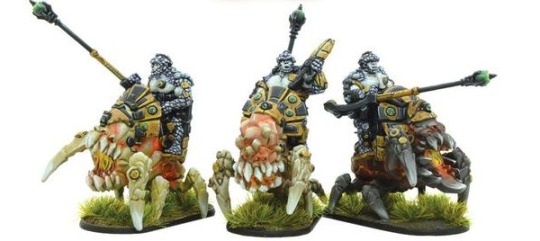
Boromite Rock Rider Squad
Pretty much exactly the same as the overseers above, except a little cheaper at just over 100 points with lectro lances. Everything that applies to the Overseers applies here, a fast melee force to be reckoned with! My print of the book says you need the command before taking any RR. But other similar options need the command to take more than 1.
Strategic
The Boromites have 4 strategic options available to them.

Brood Mother
I really wanted to start with this beast first. At over 250 points she’s a huge investment, and her actual price is pretty steep too (if justifiably). In return you get the largest model currently in the game, and definitely one of the coolest! At her base cost she’s a walking weapon platform, as heavily armoured as the heaviest of vehicles and drones, armed with 4 mag light supports. These guns combined with the fact she’s MOD2 means you could put out 24 shots a turn! The downside is that she’s incredibly slow… Don’t expect her to be running up the table with any real speed. Another great reason to take the brood mother is that she’s pretty much the only way Boromites get access to the excellent batter drone. If you combined her high RES with reducing the enemies accuracy, she simply won’t quit. You can also give her some lavamite hatchlings at a relatively cheap price, which at least lets you distribute hits to squisher targets, making sure that mag cannon doesn’t get a lucky shot on your biggest model. On top of that, for a reasonable points cost you can swap out a mag light for a mag heavy, or a heavy mag.
Just watch out... even a net ammo shot that deviates is still likely to land on her! Use a reaction to run or simply go down. As it stands, there’s no penalty for a deviating shot, so you’ll pretty much be taking the pins regardless, and given her RES stat, pinning her out of the game is the easiest way of taking her down.
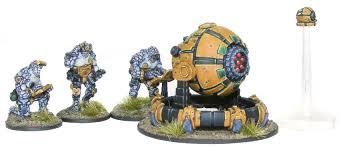
Heavy Support Team
About double the price of the basic support team, this team can take a variety of weapon options, which I have broken down below. The thing to remember is that these are pretty slow, though their long range tends to compensate for that:
Mag Heavy: The basic option, the next stag up from a mag light, increased the Rapid Fire from 3 to 5 and a small increase in SV. This lets the Boromites shred a pesky unit of C3 drones, or put a dent in some scutters in a relatively inexpensive way.
Heavy Mag: The upgrade of the Mag Cannon, with a longer range and higher SV, because sometimes you absolutely need to make sure something dies. This costs a few more points than the Mag heavy.
Mag Mortar: A relatively cheap way on being able to toss out OH templates. It’s able to take a wide variety of ammo types, but is comparatively short range compared to the howitzer. Absolutely amazing at shredding light infantry. Of course, if you give it net ammo, it can take out absolutely anything...
X Howitzer: Trades the double OH templates of the Mortar for impressively long ranges. Have you ever needed to throw out shots 250” (20ft) in a game typically played on a 6x4ft table? Then this gun is for you! Most of the ranges on it seem to be more for fluff than anything else, but if you ever decide to use your local sports hall as a battlefield, bring one of these.
Heavy Frag Borer: The iconic weapon for the Boromites, its similar to the typical Frag borer in that every time it hits, the SV goes up, and its not too shabby to begin with, the only downside is that its quite expensive, pushing unit costs to about 120.
Boromite Hauler
The first of the Boromite vehicles, costing a little over 150 points, for which you get a MOD 2 vehicle with pretty decent armour that can carry a squad or two, which makes it great for delivering the more melee focused units to the front line intact. It comes with two Mag Lights for some decent firepower, though these can be upgraded to mag cannons if necessary. If you throw in some shield drones and the batter drones, you get a very, very hard to kill model that puts a brick wall in front of your opponent and says “deal with it”
Boromite Heavy Hauler
Almost twice as expensive as the standard Hauler, this gains an extra action a turn and even more armour, at the cost of moving at half speed. As a transporter, the other hauler is probably a better option, but as a weapons platform goes, this is impressive. It comes with a Mag Heavy as standard, letting you put out 15 shots a turn! But you can upgrade this for a few extra points, in fact, it can use exactly the same guns as the Heavy Support team, which one exception, the compression bombard! This gun alone costs almost 50 points, but as with all compression weapons, it gets strong the closer you are to an enemy. Luckily, this gun is long range enough that on a standard board it will always been hitting at SV 9.
Auxiliary
The Boromites have 3 auxiliary units available to them.
Engineer Squad
A slightly odd unit, at about 40 points they’re relatively cheap, and give you an easy way of providing a batter drone shield, pushing units into the “ridiculously hard to kill” territory. At base cost they don’t come with much, not even a plasma pistol, so its definitely worth giving them *something* They can also take implosion grenades, the usual assortment of melee weapons or vorpal charges, turning them into a wrecking ball! They’re a nice little filler, use them as sappers to deny your enemy cover. The real reason to take them however, is to complement the large number of support choices Boromites can take, shaving a few extra pins off to make sure you can keep your edge.

Micromite Probe Shard
Boromite targeter probes. They’re cheap, a little slower than other drones but are a nice way of giving your army an extra accuracy buff. Boromies pack a lot of single shot, high pow weaponry, so this gives you something to mitigate the downsides. They cost the same as other probe shards due to their higher than usual RES.
Scout Probe Shard
These don’t do much, other than offering a flexible way of patching for OH fire. It would save you putting a spotter drone in lots of units, but you’d lose your reroll.
- Characters to be added later
0 notes
Text
My 5 Top One Hit Wonders
5: NENA – “99 LUFTBALLONS” (1984)
youtube
In 1983, German band Nena released their self-titled album and, with it, introduced the world to the simple hook of “99 Luftballoons”. Guitarist Carlo Karges saw balloons released during a 1982 Rolling Stones concert in West Berlin and wondered what it would’ve been like for them to transform into UFOs and fly over the Berlin Wall. Thus, a song was born. The song became so popular in Europe that Nena recorded a new version with English vocals. That English version gets creative, though, and colors the balloons red whereas the original version just describes them as “air” to fix syllable emphasis. It makes it cuter to imagine the balloon UFOs as red, so it’s almost for the better, but the real focus falls on the song’s crystal-like synth and chugging rhythm section anyway, so most people don’t notice.
4: A-HA – “TAKE ON ME” (1984)
youtube
Video made this radio star. The Norwegian synthpop outfit originally recorded “Take On Me” under the title “Lesson One”, and it tanked. They learned their lesson quicker than you can count the times it’s been spewed on the walls of your nearest karaoke bar by re-releasing a new video directed by Michael Jackson collaborator Steve Barron. The video took months to create — because tracing live footage over pencil-sketch animation (rotoscoping) was as tedious in the ‘80s as those disaster perms — but it was worth the wait. The MTV Video Music Awards launched their career, embedding A-ha into the brains of every human on the planet. It’s not just the video that was responsible for any a-ha moments: Take that melodramatic rattle, steep it in glammy new wave that fuses a soothing synth backbeat, haloed keys, and pristine vocals, and you’ve got the uncanny formula for a song to sound decades old, yet utterly refreshing
3: FIVE STAIRSTEPS – “O-O-H CHILD” (1970)
youtube
Who are the “First Family of Soul”? If you answered The Jackson 5, you aren’t wrong. But just know that Chicago soul sibs Five Stairsteps held the title first. The group, originally made up of four teenage brothers and a sister, were discovered at a talent show by Fred Cash of The Impressions and introduced to Curtis Mayfield, who signed them to his Chicago imprint. Though they remained a popular act for a solid decade before things began to dissipate, “O-o-h Child” stands as their only bona fide hit – but what a calling card. The song, an uplifting hand on the shoulder, begins with sister Alohe Jean promising that “things are going to get easier,” before passing the mic for a series of solos, harmonies, and instrumental swells. When the five join together and promise that “things will get brighter someday,” every part of you wants to believe them. It’s a song that simply says that things won’t always be this difficult, so hang in there. I can’t imagine that message ever not finding someone in need of it
2: THE SUGARHILL GANG – “RAPPER’S DELIGHT” (1979)
youtube
One of the most illustrative rap songs to exist came early in the game. So early that it was one of the first songs to introduce hip-hop to listeners at large. The Sugarhill Gang revolutionized the music world with the release of “Rapper’s Delight” in 1979. Michael “Wonder Mike” Wright, Henry “Big Bank Hank” Jackson, and Guy “Master Gee” O’Brien took their name from the Harlem neighborhood of the same name despite growing up in Englewood, New Jersey, adding to what would become a critical hip-hop scene in the years that followed.
As culturally important as it is historically significant, the song, at its most basic, is pleasing based off sound alone. The track’s funk bassline takes its time plodding around while a disco guitar clip strums over it, creating an easy flow that invites listeners to sway along. That, paired with the song’s easy-to-learn shout-outs, makes it a household track, even for little kids.
But it’s the lyrics, like most rap songs, that make “Rapper’s Delight” a one-hit wonder that stands the test of time. It’s jam-packed with quote-able phrases (“I’d like to say hello/ To the black, to the white, the red and the brown/ The purple and yellow,” “The chicken tastes like wood,” “Just throw your hands up in the air/ And party hardy like you just don’t care”), but by far the most famous is “Hotel, motel/ Holiday Inn.” Decades in, that resurfaces regularly in music as a nod from artists who know their history, no matter what genre their song falls under. It’s a timeless form of artistry that prioritizes fun, ridiculousness, and talent equally, never once taking itself too seriously — which makes it that much better
1: MODERN ENGLISH – “I MELT WITH YOU” (1982)
youtube
Modern English deserved a better fate. After all, the English outfit were one of the few new wave acts of the ’80s that could pen music durable enough to outlive its sugary decade. But, how do you top a song like “I Melt With You”? It’s not just difficult; it’s near impossible. If you’ve learned anything from this list, it’s how easy it is for a bona fide radio hit to be cemented as a hallmark in the fabric of time, sort of like little Polaroids trapped in a super-glued scrapbook. What perhaps elevates Modern English from the frozen bunch is how their landmark hit has managed to tap into the lives of every generation since its 1982 debut.
Why? Mostly because there’s nothing really flashy about the song. It’s a simple construction — guitars and drums and timeless poetry — and literally every one who’s ever been head over heels (or Chucks?) about someone can relate to its central thesis: “There’s nothing you and I won’t do/ I’ll stop the world and melt with you.” Granted, pop culture has done its damndest to make sure it’s remembered as an ’80s song — from its silver-screen debut in 1983’s Valley Girl to this past summer’s Stranger Things — but that has never once stopped it from soundtracking school dances or kicking off a mixtape between two young lovers.
0 notes
Text
Zwischen Wikingern und Weltall oder die Überlegenheit der Literatur gegenüber der Physik - Drei E-Books von Freitag bis Freitag zum Sonderpreis
(Pinnow 13.01. 2017) Sind eigentlich Zeitreisen möglich? Mit Einstein sagt die Physik ja – zumindest was Zeitreisen in die Zukunft angeht. Schlechter sieht es dagegen für Zeitreisen in die Vergangenheit aus. Sagt die Physik. In der Literatur dagegen ist beides möglich, wie die drei aktuellen Deals der Woche der EDITION digital beweisen, die im E-Book-Shop www.edition-digital.de acht Tage lang (Freitag, 13.01. 17 - Freitag, 20.01. 17) zu jeweils stark reduzierten Preisen zu haben sind.
Die Rede ist von literarischen Zeitreisen in Zukunft und Vergangenheit. Und da geht es diesmal einmal zurück in die Vergangenheit, zu den Wikingern, einmal vorwärts in die Zukunft und einmal in – beide Richtungen. Das gilt zumindest für die Science-Fiction-Reihe von Hardy Manthey, der ausdrücklich eine Zeitreisende durch Raum und Zeit schickt. Mehr dazu weiter unten. Begeben wir uns zunächst in den frühmittelalterlichen Nord- und Ostseeraum, zu den Wikingern.
Erstes Angebot des zweiten Newsletters des neuen Jahres ist der erstmals 1990 als Druckausgabe im Rostocker Hinstorff Verlag erschiene historische Roman „Odins Schwert“ von Heinz-Jürgen Zierke: Der junge Wikinger Ansgar muss die Ermordung seiner Eltern und den Raub seiner Schwester miterleben. Als er den Göttern geopfert werden soll, zerstört er im Tempel die Nachbildungen der Götter und flieht mit Odins Schwert. Er findet in Egil einen Blutsbruder und beide werden tollkühne Krieger, die von der Burg Vinborg aus zu Seeschlachten und Raubzügen aufbrechen. Odins Schwert scheint Asgar zu schützen, der es nicht durch Blut entweiht. Doch als er die Mörder seiner Eltern kennt, schwört er nur noch Rache und richtet in seinem Heimatort ein Blutbad an. Das blutige Schwert lässt er im Tempel zurück.
Doch ehe Ansgar und Gil gemeinsam kämpfen können, müssen sie sich erst einmal begegnen. Und diese Begegnung findet in einer für Ansgar scheinbar aussichtslosen Situation statt. Dabei begegnen wir zunächst gar nicht Ansgar, sondern Egil:
„Eine der beliebtesten Höhlen, die gleichwohl keiner ohne heimliches Grausen aufsuchte, in der man nur zu flüstern wagte, hatte die See hinter dem Riesenstein ausgewaschen. In diesem Felsblock von der Größe eines Bauernhauses klaffte ein fingerbreiter Riss, gezackt wie ein Blitz um Mitternacht. Man konnte, wenn die Augen den günstigsten Abstand fanden, durch den Stein weit hinaus auf die See schauen. Und in den Winternächten, bei Frostklirren und Mondschein, sah man die blakenden Kienspäne, die den an Walhalls Göttertafel prassenden Helden leuchteten. Wehe aber, man trat zu nahe an den Spalt oder steckte gar den Finger hinein! Mit Donnergetöse würde sich der Riss auftun, zuschnappen und den Finger, den Arm, den ganzen Leib des Verwegenen schlucken.
Einst hatte der ungeschlachte Riese Hymi den jungen Gott Thor aufgefordert, seine Stärke zu beweisen, indem er mit bloßen Händen des Riesen Goldbecher zerbräche. So sehr sich Thor auch anstrengte, alle Muskeln spannte, dass die Stirnadern platzen wollten, er drückte nicht einmal eine Delle in das Gefäß. In aufloderndem Zorn schleuderte er den Becher gegen den Fels. Der Stein barst, das glänzende Metall aber zeigte nicht den geringsten Kratzer. Hohnlachend sprang der Riese mitsamt seinem Gold in den Spalt, bevor Thor ihm mit seinem Hammer den Schädel zerschmettern konnte. Hymi saß noch heute in diesem Stein, und wenn ihm einer auf Armeslänge nahe kam, packte er mit seiner Bärentatze zu. So warnten die Großmütter die Enkel. Die aber ... nun ja, sie bewiesen sich ihre Unerschrockenheit, wussten sich in dieser Grotte ungestört und konnten tun und treiben, was woanders Anstoß erregt hätte. Ein unerklärliches, aber sicheres Gefühl zog Egil gerade dorthin, obwohl er sich sagte, dass ein Fremder nichts von diesem Versteck wissen konnte. Er stieß einen heiseren Schrei aus, als er die zerschrammten Füße im Geröll sah. Erschrocken schlug er sich auf den Mund. Zu spät. Der da lag, auf dem Bauch, die Arme unter dem Leib, als hätte er versucht, sich abzustützen und wäre dabei eingeknickt, die Beine leicht angezogen, das Gesicht zur Seite gedreht, der war ein junger Bursche, nicht älter als Egil, der ärmlichen Kleidung nach ein Bauer oder Fischer, und der Schwertknauf, der unter der Hüfte hervorlugte, sagte ihm: ein Jungkrieger. Nur zögernd näherten sich die andern, Mädchen, Burschen, Frauen, Kinder, mutiger die Männer, aber auch sie gespannt, bereit davonzulaufen, wenn die haarige Tatze sich aus dem Fels schöbe. Erst als Egil sah, wie sich der alte Lobdrok bückte, um mit seinen zitternden Händen den Verunglückten umzudrehen, regte er sich wieder, schob den Greis beiseite, setzte dem Toten den Fuß in den Nacken, ließ sein Schwert wirbeln und krähte: „Mir gehört er, mir!“ Unter den nackten Sohlen spürte er, da war noch Leben.“
Und nun vorwärts in die Zukunft und damit zugleich zurück in die Vergangenheit: Um eine geheimnisvolle Botschaft geht es auch in dem zweiten und für die Neuauflage stark überarbeiteten Teil der Science-Fiction-Reihe „Die Zeitreisende“ von Hardy Manthey. Die Buchreihe erzählt von den atemberaubenden Abenteuern einer jungen Frau, die durch Raum und Zeit reist. Sie ist eine auffallend schöne, blonde und vor allem intelligente Schwedin, die in München erfolgreich Medizin studiert hat. Die blinde Liebe zu einem Mann stürzt sie in das Abenteuer ihres Lebens. Ihre Erlebnisse im ersten Teil der Reihe „Vom 22. Jahrhundert zurück in das antike Karthago“ und in seinen Fortsetzungen schildern beklemmend realistisch, was Frauen seit vielen tausend Jahren, zum Teil bis heute, erdulden und erleiden müssen. Maria Lindström überlebt als einzige einen Flug zum Pluto und landet sicher auf der Erde - allerdings 150 Jahre vor Christi Geburt. Als Aphrodite schließt sie sich Nomaden auf dem Weg nach Karthago an. In die noch unzerstörte antike Stadt zieht sie in Ketten ein und muss als begehrte Hure ihrem Herrn dienen. Aphrodite hat nicht nur das elende Sklavenleben zu erdulden, noch mehr Sorgen macht sie sich, ob sie den 3. Punischen Krieg und die Zerstörung Karthagos überleben wird. Doch genau dieses Wissen über die Zukunft der Stadt setzt sie für ihre Rettung ein. Wird es ihr gelingen, rechtzeitig Karthago zu verlassen und in das 22. Jahrhundert, aus dem sie als Maria startete, eine Botschaft zu übermitteln?
Der zweite Teil der Reihe trägt den Titel „Von der Hure Roms zur mächtigen Priesterin“. Er führt die schöne blonde Aphrodite noch rechtzeitig vor dem 3. Punischen Krieg mit ihrem Herrn Eklasteos aus Karthago auf ein Schiff nach Sizilien. Viele Qualen und Erniedrigungen hat sie zu erdulden, obwohl sie zur Hure Roms aufsteigt und schließlich eine angesehene und reiche, aber rechtlose Ehefrau wird. Von ihrem Ziel, eine Botschaft in das 22. Jahrhundert zu senden, ist sie weit entfernt. Riskieren wir einen kurzen Blick in die Handlung dieser spannend miteinander verwobenen Vergangenheits-Zukunfts-Geschichte oder Zukunfts-Vergangenheits-Geschichte:
„Sie steht auf und blickt über das Meer. Es ist wunderschön und am Horizont glaubt sie, Land zu erkennen. Tatsächlich, zur gleichen Zeit ruft einer der Matrosen, dass Inseln in Sicht seien. Nun werden wieder die Ruderplätze besetzt. Es sind alles sehr kräftig gebaute Männer. Die Männer sind aber keine Sklaven, wie sie aus den Aufzeichnungen des Professors und dem Geschichtsunterricht von früher oder besser von übermorgen erfahren hat. Die muskulösen Ruderer sind stolz auf ihre Leistung. Es ist schon beeindruckend, wie sie die großen Ruder bewegen. Sie legen sich im Angesicht des Landes mit Begeisterung in die Riemen, rudern aber nur so lange, bis die gefährlichen Klippen umschifft sind. Ob sie die Freude mit den Männern teilen kann, wenn sie in Syrakus angekommen sind? Was werden ihr Syrakus und Sizilien bringen? Ist sie weit genug entfernt vom Kriegsschauplatz Karthago? Sie will es hoffen und glauben. Aphrodite entspannt sich noch etwas und döst vor sich hin. Die Sonne steht schon hoch, es geht an der Küste der kleinen Inseln vorbei in Richtung Osten. Bis ans Ufer reicht an manchen Stellen der Wald. Nur um kleine Siedlungen herum ist jeglicher Wald verschwunden. Ebenso karg, wie es ihr rund um das Mittelmeer aus der Erinnerung bekannt ist. Die mediterrane Landschaft späterer Jahrhunderte muss also erst noch durch Menschenhand entstehen. Das Wetter ist ruhig. Der Wind aus dem Süden reicht soweit aus, dass keiner mehr rudern muss. Alles ist so schön, dass Aphrodite geneigt ist, das Leid um sie herum für einen Moment zu vergessen.
Das leise Jammern von Alana holt sie wieder in die so grausame Realität zurück. Eigentlich mehr zufällig blickt Aphrodite nach hinten und sieht weit weg am Horizont ein Schiff mit vollen Segeln und mit langen Rudern kommen. Sie kann bald genau sehen, wie die Ruder das Wasser aufpeitschen. Das Schiff scheint sehr schnell, vor allem viel schneller als ihr Schiff zu sein. Aufgeregt ruft deshalb Aphrodite: „Ein Schiff kommt auf uns zu!“ Ihr Ruf löst unerwartet Panik aus. „Das sind Seeräuber!“, ruft jemand von der Schiffsbesatzung. Sofort greifen die Männer in die Riemen und der Trommler schlägt immer schneller den Takt für die Ruderer, aber das Schiff nähert sich immer mehr. Angst macht sich breit. Aphrodite hat von grausamen Überfällen gehört. Piraten töten die Besiegten eigentlich immer. Ein Glücksfall ist es, als Sklave verkauft zu werden. „Für mich kann es nicht schlimmer kommen“, denkt Aphrodite und beobachtet doch nervös, was nun passieren wird. An Zeichen und kurzen Kommandos des Kapitäns, die sie nicht versteht, erkennt sie, dass ihr Schiff einen neuen Kurs nehmen soll. Tatsächlich steuert es mehr auf die Küste zu und die gefährlichen Klippen kommen immer näher. Nun begreift auch Aphrodite, dass sie durch die Klippen dem größeren Piratenschiff entkommen wollen. Mit den gewagten Manövern gelingt es tatsächlich, den bedrohlich nahe kommenden Felsen und Untiefen auszuweichen. Nun steht die Frage auf allen Gesichtern: „Folgen ihnen die Seeräuber weiter?“ Mit schnellem Takt treibt der Trommler alle zu Höchstleistungen an. Alle, die nicht helfen können, beobachten das Piratenschiff. Zuerst kommt es immer näher, doch plötzlich fällt es mehr und mehr zurück. Ein lautes Bersten von Holz, das vom Piratenschiff kommt, löst allgemeinen Jubel aus. Es hatte tatsächlich zu viel Tiefgang und ist bei der Verfolgung auf die Unterwasserfelsen geraten. Das Piratenschiff sinkt überraschend schnell.“
Im Übrigen ist es natürlich besser, auch schon den ersten Teil der „Zeitreisenden“ gelesen zu haben, aber für alle diejenigen, die gleich mit dem zweiten Teil beginnen, liefert der Autor zu Anfang eine geraffte Zusammenfassung der Ereignisse davor.
Ebenfalls dem Genre Science Fiction ist auch das dritte und letzte Angebot dieses zweiten Newsletters des neuen Jahres zuzurechnen. Der utopische Roman „Die Ohnmacht der Allmächtigen“ von Heiner Rank war erstmals 1973 im Verlag Das Neue Berlin erschienen: Auf den ersten Blick scheint es ein Paradies zu sein, in das Asmo, der Mann ohne Erinnerung, verschlagen worden ist, ein Land des ungetrübten Genusses, des pausenlos anhaltenden Glücks. Die Dafotil, Bewohner des Planeten Astilot, kennen weder Mangel noch Sorge noch Krankheit, Alter, Unrecht, Strafe, Zwang, Gewalt. Was sie wünschen, geht in Erfüllung, ihr Gruß lautet: „Viel Liebe!“ Und dennoch fällt es Asmo schwer, sich einzuleben. Das Aromakonzert auf der Duftorgel lässt ihn kalt, Jonas hemmungslose Hingabe befremdet ihn, die Unterwürfigkeit der Dienstautomaten macht ihn traurig, das zügellose Gebaren auf dem Tanzessen widert ihn an. Was soll er hier, wo er ein Fremdkörper ist und allein durch seine Existenz die ausgeklügelte Harmonie gefährdet? Wem dient es, welche Absicht verbirgt sich dahinter?
Heiner Rank begnügt sich nicht mit Andeutungen, wie es auf dem Planeten Astilot aussehen könnte, er geht ins Detail, und seine Fantasie ist bis zum letzten Kapitel frisch und unverbraucht. In Landschaften und Bauten, in technischen und sozialen Einrichtungen, in Machtverhältnissen, menschlichen Beziehungen, Gewohnheiten und Anschauungen offenbart sich eine fremdartige Welt, farbig und vielgestaltig, immer wieder neu, überraschend anders, fordert heraus zum Vergleich und zur Wertung. Die symbolhafte Fabel, eingebettet in eine von starken Spannungshöhepunkten getragene Handlung, stellt Fragen, die in der Utopie traditionell sind: Was ist Glück, worin liegt der Sinn des Lebens? Die Antwort ist nicht endgültig, kann es nicht sein, weil jede Zeit auf eigene Weise zu antworten weiß, doch sie führt dahin, dass wir Probleme wiedererkennen, dass wir Befürchtungen und Hoffnungen entdecken, die auch uns bewegen.
Der Roman beginnt mit einer Woge – mit einer Woge Ozon: „Eine Woge Ozon wehte durch den Raum, kaum spürbar, sanft wie ein Hauch. Der Mann auf dem Bett begann sich zu bewegen. Er öffnete die Augen noch nicht, ganz gegen seine Gewohnheit; er zögerte, als würde er ahnen, dass er nur noch wenige Sekunden hatte, bevor ihm etwas Neues, etwas Unbekanntes entgegentrat. Er lag reglos, atmete in tiefen Zügen einen fremden, belebenden Duft und überließ sich den Bildern, die in ihm aufstiegen. Schaumkronen auf glasgrünem Wasser, das Rauschen der Brandung. Sein Pferd geht in spielerischem Trab über den feuchten Sandstreifen des Ufers, mit beiden Händen hält er sich an der wehenden Mähne. Dicht neben ihm ein Mädchen, braun gebrannt, in abgewetzten Hosen, ein rotes Band in dem vom Wind zerwühlten Haar. Weit vor ihnen die anderen Reiter, Schemen, verwischte Konturen, die rhythmisch auf und ab schwingen. Das Mädchen singt. Ein wildes Lied, eine heisere Stimme. Ist es der Schmerz, sich für lange Zeit von der vertrauten Welt zu trennen, Abschied zu nehmen von den Menschen, die sie liebt? Oder nur Ungeduld, freudige Erwartung, Sehnsucht nach der einmaligen, unwiderruflichen Tat, nach den Abenteuern der Erkenntnis?
Der Mann lauschte. Fremde Klänge drangen in sein Ohr. Säuselnde Geigen, darüber die Tonperlen eines Cembalos. Die Musik störte. Sie gehörte nicht dazu, begann die Bilder zu verdrängen. Er wollte sie festhalten, suchte nach den Namen für das Mädchen, die Freunde, das Meer. Vergeblich. Er fand die Namen nicht, und ohne Namen ließ sich nichts beschwören. Das Mädchen, die Freunde, das Meer, sie versanken in Nebelschleiern. Der Mann schüttelte ärgerlich den Kopf und öffnete die Lider. Was er sah, war ihm unbekannt. Ein mittelgroßer, rechteckiger Raum. Die Zimmerdecke gab gelbes Licht, das keine Schatten warf. Wände und Fußboden waren grau, aus einem glänzenden pelzartigen Material, ebenso die wenigen apfelsinenfarbenen Möbel. Die Musik war noch da. Sie schien aus den Wänden zu dringen. Der Mann richtete sich auf, hellwach. Er schwang sich aus dem Bett und streifte die Decke ab, die leicht an seiner Haut haftete. Sein Körper war muskulös, ohne Anzeichen von Fett, die Haut von gesundem Braun. Dreißig Jahre hätte man ihm gegeben auf den ersten Blick, doch der Ausdruck seiner Augen, die Linien um Kinn und Mund verrieten zwanzig Jahre mehr an Arbeit und Erfahrung.“
Und was das Phänomen der Zeitreisen angeht, da sollten wir vielleicht noch wissen, dass sich die Physiker vor Zeitreisen in die Vergangenheit fürchten. Denn bei dem Phänomen der „geschlossenen zeitartigen Kurven“ könnte es durchaus sein, dass man gewissermaßen durch die Zukunft in seine eigene Vergangenheit reist und dort womöglich die eigene Vergangenheit durcheinander bringt. Und es soll sogar möglich sein, dass eine Gegenwart gleich mehrere Vergangenheiten hat – sagt die Physik. Was für ein literarisches Thema …
Weitere Informationen und Angaben finden Sie unter http://www.prseiten.de/pressefach/edition-digital/news/3730 sowie http://www.edition-digital.de.
Über EDITION digital Pekrul & Sohn Gbr:
EDITION digital wurde 1994 gegründet und gibt neben E-Books Bücher über Mecklenburg-Vorpommern und von Autoren aus dem Bundesland heraus. Ein weiterer Schwerpunkt sind Grafiken und Beschreibungen von historischen Handwerks- und Berufszeichen.
Pressekontakt:
EDITION digital Pekrul & Sohn GbR
Gisela Pekrul
Alte Dorfstr. 2 b
19065 Pinnow
Deutschland
03860 505788
[email protected]
http://www.edition-digital.de
0 notes
Text
Space is the Place--to Meditate...
The one who can control himself, can control the world—his world…
You don’t have to go anywhere to meditate, except inside. Much is made in the modern New Age movements of all the different kinds of meditation, which, according to the books and blogs can easily number into the dozens, if not hundreds. But most of those sources aren’t really Buddhist, not in any strict sense. Still, a quick…

View On WordPress
#anapanasati#Buddhism#CHRISTIANITY#dharma#Hardie Karges#language#mantra#meditation#mindfulness#New Age#samatha#Theravada#Tibetan#Transcendental Meditation#Vipassana#yoga
2 notes
·
View notes
Text
Vive la Difference! Between Christianity and Buddhism...
Christianity seeks joy out there somewhere, while Buddhism seeks to limit suffering right here inside. And that’s the big difference between the two, the outward search versus the inward search, and the destination for ultimate satisfaction. The idea, in fact, that there may really be no substantial difference between the two is something that only arose later, after the rise of Mahayana…

View On WordPress
4 notes
·
View notes
Text
The Lessons of Life and the Lessons of Buddhism
Sometimes the worst disasters teach the best lessons. And this itself is one of the most sublime lessons of Buddhism, if never the easiest to embrace, that all of our most elaborate plans will certainly fall apart, sooner or later, in part if not wholly. We will be left with whatever remains, and we should be prepared to deal with it. That doesn’t mean elaborate rituals to be done or the best…

View On WordPress
2 notes
·
View notes
Text
The Passion and (dis)Passion of Buddhism...
Buddhism in Sri Lanka
There is no worse slavery than the slavery to your passion(s). And that’s a tough pill to swallow, because we tend to think of our passions as our pleasures, as though it’s only natural to be obsessed and conflicted. It’s not. But that shows the path that western culture has taken, in which our passions, which once meant ‘suffering,’ now are the focal point of our lives,…
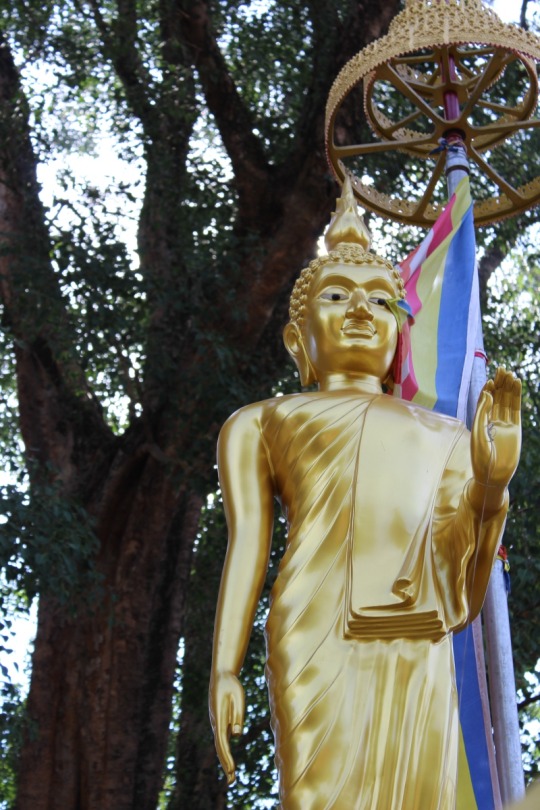
View On WordPress
#Buddhism#caste system#CHRISTIANITY#dialectic#dispassion#eternal life#Hardie Karges#Indo-European#Indus Valley#Kramer#language#passion#Passion of Christ#rebirth#religion#samsara#Seinfeld
2 notes
·
View notes
Text
Buddhist Karma and the Middle Path to Salvation
You want good karma? Help a beggar to eat. That’s good karma. Because karma literally means ‘acts’ or ‘actions’, though it is often used almost synonymously with the English word ‘fate,’ as though it were all about some sort of predestination. But no, that’s a derivative meaning which may or may not always apply. The most important thing is right actions, or samma kammanta, as specified in the…

View On WordPress
#CHRISTIANITY#Eightfold Path#Four Noble Truths#Hardie Karges#karma#language#Middle Path#rishi#Sanskrit#Ten Commandments
2 notes
·
View notes
Text
Buddhism and the Dialectic of Deliverance…
Buddhism and the Dialectic of Deliverance…
Buddhism needs no fancy metaphysics nor linguistics, multiple hells nor forty-two flavors of emptiness. Kindness & compassion are enough, metta and karuna and all that jazz. Which is one of the singular beauties of the faith, of course, that almost nothing is required up front, but some goodwill and a policy of non-aggression, ahimsa, such that oftentimes simply doing nothing, absolutely nothing,…
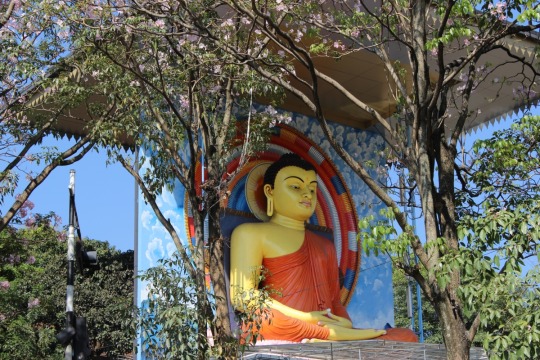
View On WordPress
#Buddhism#compassion#Hardie Karges#Japan#karuna#kindness#metta#secular Buddhism#Theravada#Tibet#Vajrayana#Zen
2 notes
·
View notes
Text
Buddhism in the Bardo: the Language of Dialectic and the Silence of Meditation…
Buddhism in the Bardo: the Language of Dialectic and the Silence of Meditation…
Language cannot solve the problems that language creates. Only silence can do that. This is one of those inherent little foundations of Buddhism, also, like non-aggression and the limits to fulfillment, that often get lost in the shuffle of rebirth, karma, and the endless choices of past lives. But that is the essence of philosophy, and religion, to find some reason to live, without expending too…

View On WordPress
#antithesis#Aryan#Buddhism#CHRISTIANITY#dialectic#Hardie Karges#language#Mahayana#meditation#philosophy#religion#synthesis#Theravada#thesis#Vajrayana
3 notes
·
View notes
Text
Buddhism 202: Happiness Sandwiches, with Something in the Middle…
Buddhism 202: Happiness Sandwiches, with Something in the Middle…
If you’re looking for bliss, then you may be disappointed. Happiness for me is the reduction, and hopefully cessation, of suffering. Anything else is icing on the cake. Count your blessings. In other words, bliss is optional and perhaps not even desirable. After all, when your psychological pendulum swings too far in one direction, isn’t it bound to swing back to the other with equal force? It’s…

View On WordPress
#ahimsa#anatta#bliss#Buddhism#Eightfold Path#Four Noble Truths#happiness#Hardie Karges#Three Marks of Existence
3 notes
·
View notes
Text
Non-Violence: the Original and Noblest Truth of Buddhism...
‘First do no harm,’ primum non nocere in Latin, is part of the Hippocratic Oath. It should also be part of the Buddhist Oath. Because nothing is more important, not really, than ahimsa, non-violence, even if it’s not part of the Four Noble Truths or even the Eightfold path, though it could easily be assumed in samma kammanta, samyak karmanta, i.e. right actions, so obvious is the connection. And…

View On WordPress
#ahimsa#Dalai Lama#Eightfold Path#empathy#Four Noble Truths#Hardie Karges#Hippocratic Oath#karma#meditation#Middle Path#sympathy
0 notes
Text
Buddhism 202: Nature is the Law of Life
Kindness is the only religion...
Nature is a law, not a mountain. Rivers and oceans have no more independent existence than you or I. But this is a bone of contention among religions, now, isn’t it, and possibly the main point of division between competing philosophies? Because, if an eternal soul divides Hinduism from Buddhism in India, then the same issue is what divides almost all Western religions from their secular…

View On WordPress
0 notes
Text
Buddhism 101: the Middle Path is Easy
Muslims don’t always seem happy. Christians sometimes seem too happy. Buddhists seem just about right, more or less, give or take, on average, all things considered. That’s the middle path, that sweet spot somewhere between extremes, of luxury and lack, surrender or attack, white and black, better multicolor than random shades of gray. And that’s foundational to Buddhism, that lack of hard…
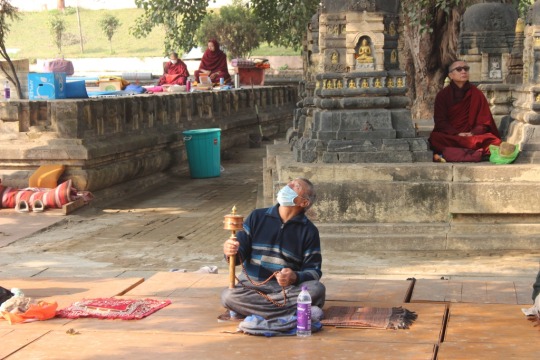
View On WordPress
0 notes